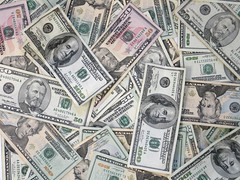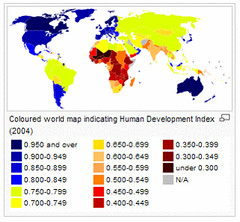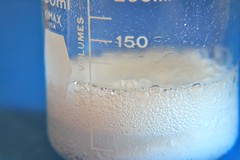| 4952412723 | matter | -anything that occupies space and has mass
made of atoms
-after a chemical reaction, the original atoms remain |  | 0 |
| 4952412724 | mass | a measurement of the amount of matter an object contains |  | 1 |
| 4952412725 | atom | the smallest particle than can contain the chemical properties of an element |  | 2 |
| 4952412726 | element | -a substance composed of atoms that cannot be broken down into smaller, simpler components
-made of only one type of atom |  | 3 |
| 4952412727 | periodic table | a chart of all chemical elements currently known, organized by their properties |  | 4 |
| 4952412728 | molecules | a particle that contains more than one atom |  | 5 |
| 4952412729 | compounds | a molecule containing more than one element |  | 6 |
| 4952412730 | atomic number | the number of protons in the nucleus of a particular atom |  | 7 |
| 4952412731 | mass number | a measurement of the total number of protons and neutrons in an element |  | 8 |
| 4952412732 | isotopes | atoms of the same element with different number of neutrons |  | 9 |
| 4952412733 | radioactive decay | -protons and neutrons ejected from nucleus (parent)
-release energy (can damage DNA)
-creates new element (daughter)
-release large amounts of energy
-measured in half-life
-carbon dating |  | 10 |
| 4952412734 | half-life | the time it takes for one-half of an original radioactive parent atom to decay |  | 11 |
| 4952412735 | covalent bond | the bond formed when elements share electrons |  | 12 |
| 4952412736 | ionic bond | a chemical bond between two oppositely charged ions |  | 13 |
| 4952412737 | hydrogen bond | -when electrons are not shared equally in a compound that contains Hydrogen
-can attract anything negatively charged |  | 14 |
| 4952412738 | polar molecule | -a molecule in which one side is more positive and the other side is more negative
-shared electrons spend more time near the oxygen atom than near the hydrogen atom | | 15 |
| 4952412739 | energy | -the ability to do work or transfer heat
-measured in joules (J)
-electromagnetic radiation
-high or low quality |  | 16 |
| 4952412740 | electromagnetic radiation | -transfers energy in protons
-measured in wavelengths |  | 17 |
| 4952412741 | photons | a massless packet of energy that carries electromagnetic radiation at the speed of light |  | 18 |
| 4952412742 | joule | the amount of energy used when a one-watt electrical device is turned on for one second |  | 19 |
| 4952412743 | potential energy | stored energy that has not been released |  | 20 |
| 4952412744 | kinetic energy | the energy of motion |  | 21 |
| 4952412745 | chemical energy | -potential energy that is stored in chemical bonds
-can be released by ingesting food |  | 22 |
| 4952412746 | temperature | -the measure of the average kinetic energy of a substance | | 23 |
| 4952412747 | first law of thermodynamics | -a law of nature stating that energy can neither be created nor destroyed |  | 24 |
| 4952412748 | second law of thermodynamics | -the law stating that when energy is transformed, the quantity of energy remains the same, but its ability to do work is diminished |  | 25 |
| 4952412749 | energy efficiency | -the ratio of the amount of work done to the total amount of energy introduced to the system |  | 26 |
| 4952412750 | energy quality | -the ease with which an energy source can be used for work | | 27 |
| 4952412751 | entropy | -disorder/randomness in a system |  | 28 |
| 4952412752 | open system | -a system in which exchanges of matter or energy occur across system boundaries. | | 29 |
| 4952412753 | closed system | -exchange of matter or energy does not occur across system boundaries. Ex: Matter on Earth continuously recycles | | 30 |
| 4952412754 | outputs | -a loss from a system | | 31 |
| 4952412755 | inputs | -an addition to a system | | 32 |
| 4952412756 | system analysis | -looks at inputs and outputs to determine a system's function and health | | 33 |
| 4952412757 | steady state | -input = output
-amount of energy is not increasing |  | 34 |
| 4952412758 | feedback | -adjustment to input or output caused by change |  | 35 |
| 4952412759 | negative feedback loops | -a feedback loop in which a system responds to a change by returning to its original state, or by decreasing the rate at which the change is occurring |  | 36 |
| 4952412760 | positive feedback loops | a feedback loop in which change in a system is amplified |  | 37 |
| 4952412761 | adaptive management | -method of managing natural systems that accords for "normal" fluctuations and human impacts
-pollution, flood, draught, climate change, economic development, habitat destruction or restoration | | 38 |
| 4952412762 | weight | the force that results from gravity acting on mass | | 39 |
| 4952412763 | Properties of Water | -surface tension
-capillary action
-high specific heat
-less dense when frozen
-excellent solvent
-can form acids and bases | | 40 |
| 4952412764 | Surface Tension | -cohesion of water molecules creates stretchy surface layer | | 41 |
| 4952412765 | Capillary Action | -cohesion and adhesion of water molecules pulls them along a surface or up a tube | | 42 |
| 4952412766 | Less dense when frozen | -polarity pushes water molecules apart at 39F and 4C | | 43 |
| 4952412767 | High Specific Heat | -requires a large amount of heat to boil and vaporize water | | 44 |
| 4952412768 | Excellent Solvent | -polar molecule can dissolve other compounds with charges | | 45 |
| 4952412769 | Can form acids and bases | -acids add hydrogen ions (high hydrogen ion H+, low hydroxide ion (OH-) content
-bases add hydroxide ions (low hydroxide ion OH-, high hydrogen ion H+ | | 46 |
| 4952412770 | Conservation of Matter | -matter cannot be created or destroyed, only changed from one form to another | | 47 |
| 4952412771 | Organic Molecules | -contain carbon and hydrogen
-carbohydrates (CHO)
-lipids (CHO with little O; fats, waxes, oils)
-proteins (CHONS,amino acids)
-nucleic acids (CHONP, DNA and RNA) | | 48 |
| 4952412772 | Inorganic Molecules | -can contain Carbon and Hydrogen just NOT together | | 49 |
| 4952412773 | Power | -rate at which work is done
-energy= power x time
-kilowatts (kW) | | 50 |
| 4952412774 | Kinetic Energy | -energy in option or use | | 51 |
| 4952412775 | Potential Energy | -stored energy
-chemical energy | | 52 |
| 4952412776 | Law of Thermodynamics | -1st Law: energy cannot be created or destroyed, only changed from one form to another
-2nd Law: when energy is changed, it releases "useless" or waste energy in the form of electromagnetic radiation (heat, light...) | | 53 |
| 4952412777 | Energy Efficiency | -waste energy is lost at each conversion
-more energy = more efficiency | | 54 |
| 4952412778 | Open System | -exchange of matter or energy occur across system boundaries | | 55 |
| 4952412779 | Negative Feedback Loop | -accelerates change
-stimulus
-system becomes skewed in one direction | | 56 |
| 4952412780 | natural law | -phenomenon which has been rigorously tested and to which there are no known exceptions | | 57 |
| 4952412781 | amount of energy needed to change the temperature of water | -is great in relation to the energy required to change the temperature of most other substances
-is responsible for more moderate seasonal temperature swings in areas close to large bodies of water | | 58 |
| 4952412782 | Macromolecules | -carbohydrates, proteins, lipids, nucleic acids | | 59 |
| 4952412783 | Bases contribute _______ to a solution | -negative Hydroxide ions | | 60 |
| 4952412784 | Positive Feedback Loop | -when feedback into a system increases a rate of response
-may be seen in some examples of population growth | | 61 |
| 4952412785 | Natural experiment | -natural event changes an ecosystem | | 62 |

















































































































